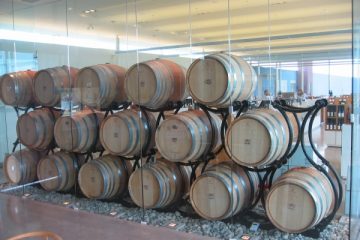Palate Press has selected our top ten stories from 2012 and will publish a 2012 Redux article each weekday until January 4, 2013. These stories highlight our featured columnists, widely recognized contributors, and most popular works published through the year. The Palate Press editorial board hopes you enjoy these highlights as we look
Sour beers, with their bright acidity and vinous, funky qualities, start to bridge the gap between beer and wine. It took a trip to the Great American Beer Festival and several brewery visits (just to be sure…) for me to get a grasp on the movement that presents beer, tarted
"These are my girls," smiles Susanna, stroking the belly of one of them with great kindness and affection. “She” replies with a quick, happy gurgle. Susanna Crociani. Photo: Max Cocchetti Susanna's Girls live all together, in a not-very-large room; on tiptoe, a feeble beam of light slips inside, careful not to
If you've never put your nose inside a few well-wrought barrels, it may be hard to understand just how excited winemakers can become about oak - and also, just how varied the contribution of oak to the profile of a wine can be. The range of smells, the different characters
There’s a reason that the Italian Trade Commission has held an annual wine fair in New York since 2009. Imports of Italian wines to these shores have increased enough that in 2010 Italy surpassed France to reach a market share-read more-
Passing through a guarded gate, my wife and I, on an anniversary trip to Spain, entered the bucolic 1000-hectare estate of the storied Vega Sicilia. This Bordeaux-style winery, founded in 1864, originally was a small village inhabited by the wineries’-read more-


